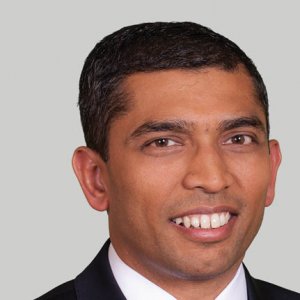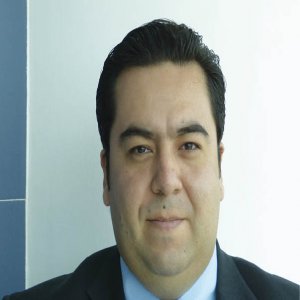Mexican Leader Ready to Take Oil and Gas Market by Storm

STORY INLINE POST
Q: What were Perforadora Mexico’s main highlights in 2014?
A: 2014 was a good year for Perforadora Mexico. We were able to report the best numbers in the history of the company, given that we began operations with the last two jack-ups that we bought, Tabasco and Campeche. Tabasco started operations on April 15 and Campeche on November 15. By the end of the year, we were operating five rigs for PEMEX. We also started preparing ourselves for Round One. Perforadora Mexico put together a small team of geologists and petroleum engineers to perform the screening of the blocks included in Round One. Since we decided to pursue medium- to low-risk fields, none of the 14 blocks announced in December were attractive for us. However, we are planning to participate in at least two of the shallow water production blocks announced in February 2015. We have not selected the partner that we will work with, but we are already in deep conversation with a potential partner that may be ready to go soon.
Q: How has the drop in the oil price and the resulting slowdown in drilling activity affected Perforadora Mexico?
A: As a country, Mexico is very dependent on oil prices, as hydrocarbons are such a crucial part of the government’s budget. The government is cutting expenses as much as possible for 2015, which is going to be difficult, and given the circumstances, 2016 will be even more challenging. Overall, this creates a complex situation for PEMEX, as it needs to cut expenses and focus on the most profitable projects, such as shallow water fields. Grupo Mexico is convinced that it would be a big mistake to cut drilling activity in Mexican shallow waters, as upstream activities are the most profitable investments in the Mexican oil and gas sector. PEMEX will reduce the current day rates for drilling rigs by a percentage that we still do not know. Once its current contracts expire, PEMEX will renew at current market level rates. In the medium term, this situation will improve with all the activity that should be coming from the bids in Round One. In the meantime, companies with expired contracts will have to look for other markets. In our case, we will be evaluating opportunities in Mexico and in other areas in the region. Before this situation, it was clear that we were going to focus all our efforts on Mexico in the short to medium term, but now, with these changes in the market, we may need to become a global or at least a regional company. The Energy Reform will help the Mexican market to recover much faster than other markets in the region. The industry is just opening, the first bids are already there, the winners are going to be announced later this year, and some operations might start next year.
Q: What measures are you taking to cut costs, and what are the opportunities to do this without affecting safety performance?
A: First of all, since December 2014 the Mexican peso has experienced a devaluation of 10% against the American dollar. This automatically reduces all costs that we normally spend in Mexican pesos by that same percentage. Secondly, we are working with PEMEX to further reduce costs, but the NOC also has certain requirements that other operators normally do not have. For example, for some contracts PEMEX demands a team of our drillers on the rig in addition to its own team. This means that there are two drilling teams at all times, duplicating costs in really expensive positions. We have estimated that only by cutting these additional requirements we could decrease the cost of each rig between US$5,000- 10,000 per day, depending on the rig. This represents around 5% of the total cost of the rig for PEMEX, which is an immediate advantage. Another possibility we could contemplate, if PEMEX is willing to help us, is integrating all insurance costs for the rigs under PEMEX’s umbrella. Insurance represents around US$6,000-7,000 per day per rig. If we manage to reduce that by 30% or 40%, we are talking about a significant reduction in costs. Finally, we could modify our contracts to be 100% integrated. On average, rigs are used 75% of the time. Part of it is due to weather conditions in which we cannot operate, but most problems are of a logistical nature. Through integrated contracts we could dramatically reduce downtime, decreasing the costs of the rig by increasing its use. We have really good downtime compared to our competitors. Last year, we finished with 98.1% uptime for our five rigs, placing Perforadora Mexico among the top companies in the industry. PEMEX’s average is around 95%, which means we are doing extremely well.
Q: If Grupo Mexico Oil and Gas were to win a block in Round One, would it be operated by Perforadora Mexico or by a new division of Grupo Mexico?
A: We have a holding company called Controladora de Infraestructura Petrolera that is the owner of Perforadora Mexico and controls all the different rig investments that we have made since 2011, worth over US$1 billion. We do not want to mix things, so if Grupo Mexico Oil and Gas wins a block, we will keep it as a separate business from Perforadora Mexico, managing it through Controladora de Infraestructura Petrolera. That way, Perforadora Mexico will be available to get as much business as possible from the new companies in the fields, maintaining a good level of competition and adequate prices.
Q: When are you going to start engaging with the new operators coming to the country?
A: We are already having meetings with most of the potential new operators to introduce our services. In terms of competition with foreign drilling companies, we have some advantages and some disadvantages. For example, until now we have only worked with PEMEX and we have become used to its requirements. This is not necessarily a good thing. PEMEX is really demanding in some areas, which forced us to improve, but it is not so developed in others, such as the way it measures efficiency. Over time, we have obtained sufficient knowledge of the local labor market; we know where to find experienced workers, how to attract them, and how to retain them. Additionally, we are working to develop partnerships with foreign companies not currently operating in Mexico. There could be a winwin situation for everybody if the operators planning to enter this market with their own drilling equipment do so through an alliances with us.
Q: What characteristics make a field attractive for Grupo Mexico Oil and Gas?
A: It is mainly a mixture of risk and field potential. We do not see Grupo Mexico Oil and Gas in big deepwater projects as we have decided to focus on medium- to low-risk fields. We will be targeting the best shallow water fields while we have also selected some onshore fields. Because of their nature, the onshore projects we selected have lower risk than shallow water fields. The problem with those is that there will be more competition during the bidding process
Q: What are the ambitions of Perforadora Mexico, and the rest of Grupo Mexico’s oil and gas operations for the next few years?
A: Perforadora Mexico is just our drilling company. Therefore, our goals are focused on consolidating Controladora de Infraestructura Petrolera as a global company. In the next few years, we want to invest over US$1 billion to become an oil operator as part of a strong consortium. We also expect to have won two or three blocks for shallow water and onshore projects by that time. On the other side, we hope to keep on being the driller of choice, mainly in the shallow water segment in Mexico.






















